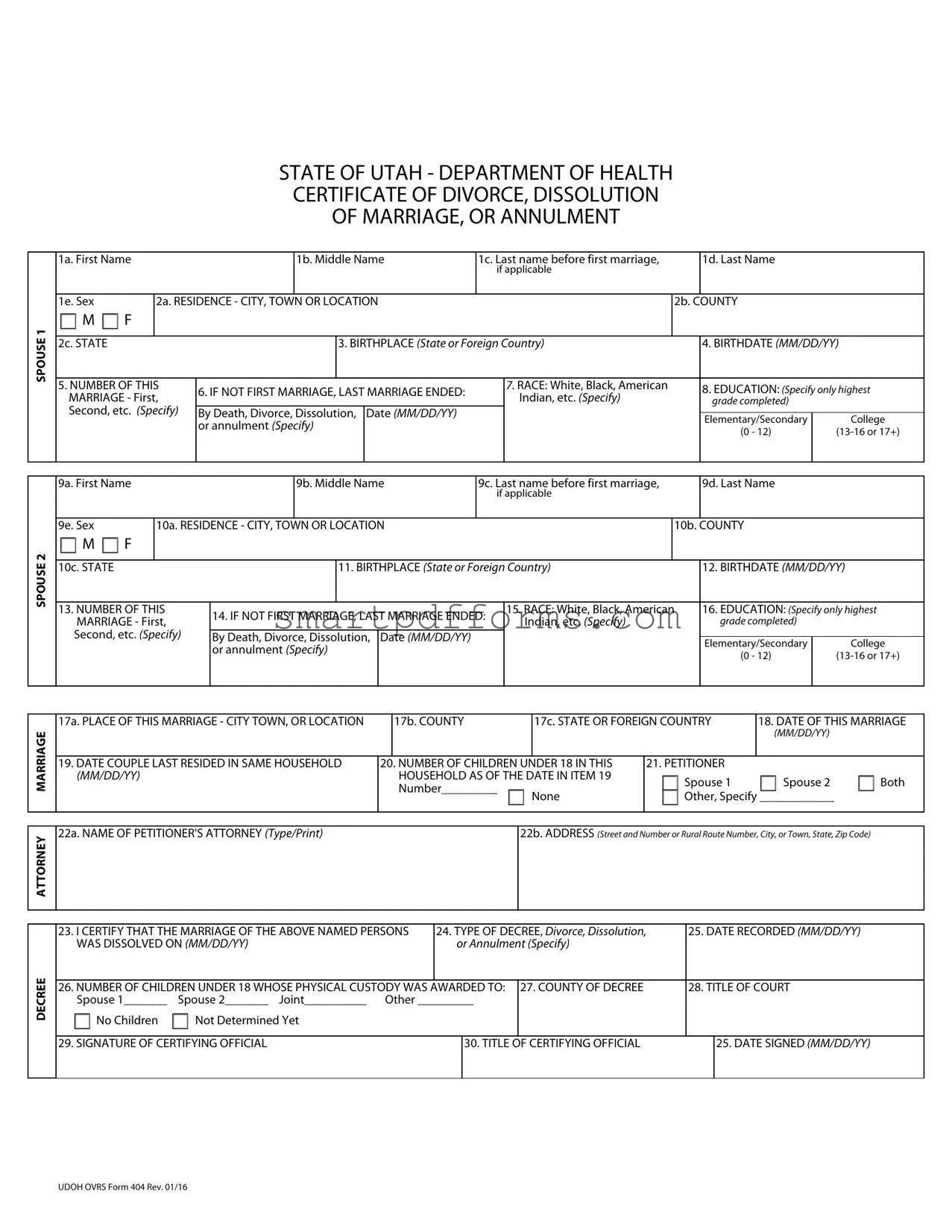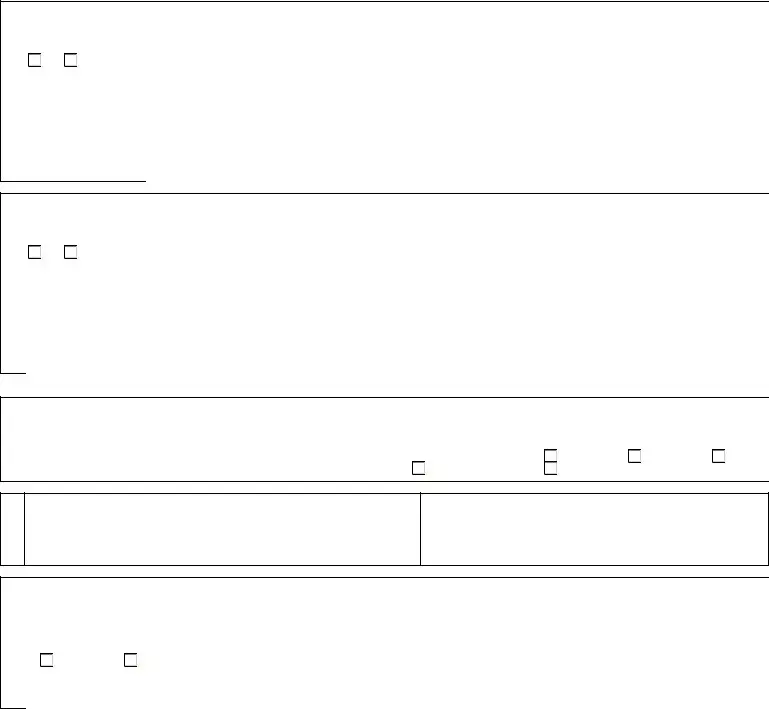The Divorce Certificate Form issued by the State of Utah - Department of Health is a comprehensive document that meticulously records the dissolution of a marriage, its annulment, or its dissolution through various essential details about both spouses. It includes sections that capture personal information such as each spouse's name, sex, residence, birthplace, birthdate, educational background, the number of previous marriages, and racial identity. The form requires specific details regarding the marriage in question, including the date and place of marriage, the last time the couple resided together, and the number of children under 18 in the household. It also demands information about the divorce itself, including the petitioner's identity, the attorney's details, the type of decree, the date of the decree, custody arrangements regarding children, and the official certifying the dissolution of the marriage. This form not only serves as a legal acknowledgment of the end of a marriage but also as a detailed record that affects various legal and personal aspects of the involved parties' lives post-divorce.

